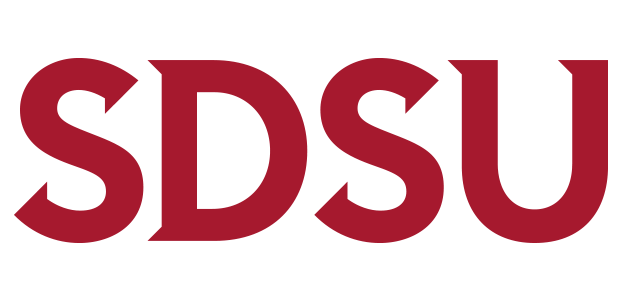We had several of our Computer Science students participate in the Student Research Symposium that took place March 5th and 6th. Some created research posters that were reviewed by a judging committee, while others gave research presentations in front of a judging panel. We are excited that our computer science students are getting involved in campus wide activities and commend each one of them for a job well done. Their research abstracts are below.
Utilizing 3D Video Game Technology for an Immersive Laboratory Experience
Mark Thompson Jr., Computer Science
Kris Stewart, Computer Science

College students of the 21st century are “digital natives”, that is, they are immersed in a digital and connected world from a young age. As such, educational software often fails to engage them at the same level as many of their leisure applications, specifically, video games. This project, funded by the National Science Foundation (DUE 0837162), brings together a multidisciplinary team of SDSU faculty and undergraduate and graduate students, with the goal of simulating a Materials Engineering laboratory. The backgrounds of the team members encompass Mechanical Engineering, Computer Science, Educational Assessment, Graphics and 3D Art. In simulating this lab, we use cutting-edge techniques in interaction design and 3D graphics programming. The ultimate goal is to provide a fully interactive 3D world which will give the player, i.e. the student, an immersive lab experience on their desktops. Not only do we utilize 3D graphics available in modern games, but we also incorporate software that will allow for assessment of student progress and learning. How much does a student learn after experiencing the game? Does he or she feel they have learned something new? The software required to implement this application will contain components for 3D graphics, user interactivity, and student assessment. Each of these components is complex on its own; therefore, the software design and software engineering effort involved is significant. This programming effort requires a tight collaboration among all parties: 3D models created by 3D artist; discipline specific (Mechanical Engineering) content for the lab simulation; 2D digital art and interface design specifications; and student assessment. This combined effort is a unique opportunity for those involved, not only because multidisciplinary projects are rare and challenging, but also because the outcome will be an innovative and revolutionary video game-based approach to providing students a Mechanical Engineering laboratory experience. Our poster will present the actual game design implemented using the Microsoft XNA Game Studio and give interactive demonstrations. NSF DUE-0837162 Accessibility of Materials Laboratory Experience for Engineering Undergraduates (GAME, PI K. Morsi, Co-PIs M. Bresciani, M. Siprut, and K. Stewart)
Smarty: An Adaptive Computation Class Library for Realtime Interactive Simulations
Brigham Toskin, Computer Science
Joseph Lewis, Computer Science

With recent advances in general purpose computing and graphics hardware, gaming and simulation platforms are growing in power and capacity. Despite this, most modern video game titles rely on legacy Artificial Intelligence techniques that have been utilized in interactive simulation software for decades, which can lead to behaviors that are unsophisticated and undesirably predictable. This paper describes how the Smarty framework avoids such limitations by leveraging the power of Complex Systems with unique enhancements and innovations to evolve appropriate behaviors in reaction to new and changing stimuli. Smarty currently incorporates three key components: a Genetic Algorithm (GA) module, an enhanced Michigan-style Classifier System (CS) module which utilizes the GA, and a Dynamic Network Classifier (DNC) module that utilizes the CS to evolve stimulus responses in a novel network model. I describe these main components in detail, demonstrating how they differ from the existing models of computation found in video game software, and sketch avenues of ongoing and future research in the development of interactive software.
e-City Secure San Diego
Kunal Bhatia, Computer Science

The Internet is the community of the future but if security measures are not put in place and enforced, then it will become more of a slum and less of a community. Security on the Internet is a very important issue in the world today. Billions of people have an on-ramp to the Information Superhighway, and more are finding one every day. The Internet transcends geographical locations, and is the first example of a true global village. Unfortunately for regular users of the Internet, much like the real world, criminals exist on the Internet as well. Hackers, the computer wizards, who use their knowledge for evil, are rampant on the Internet. Creating a virus is a little like that–it creates a bomb inside a computer. You should never double-click on an e-mail attachment that contains an executable. Attachments that come in as Word files (.DOC), spreadsheets (.XLS), images (.GIF), etc., are data files and they can do no damage (noting the macro virus problem in Word and Excel documents mentioned above). However, some viruses can now come in through .JPG graphic file attachments. IP-Based Cyber Attack-Typical corporate networking security uses authentication, encryption, firewalls, routers, Virtual Local Area Networks (VLANs), access control lists, intrusion detection, and separate network segments to isolate a control system asset from the Internet. In order to access the control system, an attacker will need to gain access to one resource, compromise that resource, and use its permissions to attack the next component in the attack path. Vulnerabilities, Threats, Attacks, and Controls-A computer-based system has three separate but valuable components: hardware, software, and data. Each of these assets offers value to different members of the community affected by the system. To analyze security, we can brainstorm about the ways in which the system or its information can experience some kind of loss or harm. For example, we can identify data whose format or contents should be protected in some way. What Makes a Network Vulnerable–Anonymity, Many points of attack both targets and origins, Sharing, Complexity of system, Unknown perimeter, Unknown path, also Malicious code-rootlets, web bugs, salami attacks, keyloggers, covert channels, amnion the middle attacks, Phishing, Bufferoverflow, Snooping, Masquarading, Denial of Service, Snake oil, Brute force, Rabbit, Spam, Botnet, Spyware, Honeypot, Eavesdropping-(Janus attack), (Bucket-brigade attack), OS vulnerabilities, Web application attacks, Client-side exploitation.
Fuzzy Logic Decision Making for an Intelligent Cooperative Multi-Robot Team that Maintains Security
Matthew Cross, Computer Science
Mahmoud Tarokh, Computer Science

Intelligent robots may assist humans working in hazardous conditions or replace them entirely in especially dangerous situations. In such situations autonomous intelligent robot systems capable of deciding themselves long-term courses of action while remaining responsive to dynamic events may have an advantage over those that require continuous human interaction. Our approach uses fuzzy logic in the decision-making process of an autonomous intelligent multi-robot security system that maintains security in environments such as warehouses, factories, and laboratories
Real-Time Metagenomics
Daniel Cuevas, Computer Science
Robert Edwards, Computer Science

Real-Time Metagenomics (RTMg) is a three-pronged project that delivers metagenome annotation services to biologists across several platforms. The first branch, RTMg.web, performs annotations of fasta-formatted DNA sequences within minutes. Mobile Metagenomics (RTMg.mob) delivers metagenome annotations to the Android cellphone platform for as-you-go analysis. Open social Metagenomics delivers the service to social networking sites for sharing data and analysis with colleagues and friends (RTMg.os). Using RTMg.web, the sensitivity and specificity of the instantaneous annotations provided by the real time server were compared to those generated by BLAST to reveal strengths and weaknesses of both approaches. RTMg.mob allows streaming data analysis with fully interruptible processes; users can take calls, browse the web, and send/receive SMS messages during annotation. The application implements the Android standard Share feature, which allows for users to email their data to other phone or computer users, and to access the data via RTMg.os. Open social metagenomics stores metagenome-annotated data on a server and allows users of the social network to access and share this information with their friends. All metagenome annotation and analysis has been designed in a portable, open, exchangeable format that allows the easy extension of the RTMg suite of applications with new tools as they become available.
How Many Microbial Genes are there in the World?
Nicholas Celms, Computer Science
Robert Edwards, Computer Science

This year the milestone 1,000 complete microbial genome was sequenced. Every new genome brings a new suite of unseen genes, as well as orthologs of known genes. The pangenome, the complement of all genes, has been calculated at different taxonomic levels, from phyla to genera, for all groups that have sufficient numbers of sequenced genomes. The selection of genes that contribute to an organism has been mathematically modeled as individual pools of genes with a probability of selection. Some genes occur in pools with a high probability of selection, as they are found in all of the genomes that contribute a group, whereas genes found uniquely in one or a few genomes have a very low probability of selection. The pools reveal interesting biological traits – a few genes are floating through biological space, being chosen rarely and not fixed in the population. Mobile genetic elements are common, and phages are more likely than plasmids, while the core genome is consistent across genera.
PhAnToMe
Brad Hull, Computer Science
Robert Edwards, Computer Science


The PhAnToMe project is creating powerful, user-friendly tools for annotating bacteriophages by building on two currently existing tools: The SEED is one of the most popular microbial annotation tools to date, and Biobike is a cyanobacterial database with a Visual Programming Language interface that allows for fluid, logical statements of the desired goal, and a simple way to reach it. Niether system has tools for phage genome annotation. Our goal is to create a fusion of the two, the friendly, powerful interface of Biobike accessing the database and infrastructure of the SEED. Local copies of both the SEED and Biobike have been installed, and links have been made between Biobike and the SEED’s databases. Now Biobike is able to access and display any bacteriophage that is stored in the SEED’s databases, allowing the end user to query the phage genomes with a simple visual programming language. Work is underway to design functions to manipulate and annotate currently existing or new bacteriophages added to the database. We are working on cross-examining both systems and their methods of operation, and contrasting that over a wide range of programming languages to see if there is a difference in performance between them, and if so, why. Upon completion, our tools will allow phage biologists, even ones unfamiliar with computer programming, to add and annotate phage genomes easily.

